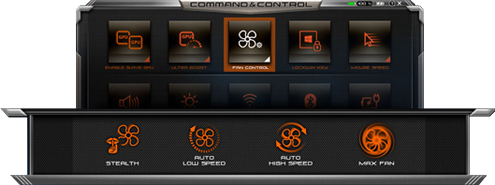

Once found, select the CPU fan to increase or decrease its speed with RPM as a unit Go to Monitor > Status > Fan speed control.
 On the BIOS front page, locate Fan Control Settings. Alternatively, you can follow this trajectory: Settings > Update & security > Recovery > Advanced Startup > Restart Now > Troubleshoot > Advanced options > UEFI Firmware settings > Click Restart. You can either, restart your PC and when it boots back up, press the ‘Delete’ and ‘F12’ keys together. Here’s how you can access and modify those settings: The Advanced Startup option BIOS has fan controlling settings in it which may differ based on your computer. 2] Use BIOS/UEFI to control the CPU fan speed The System Cooling option is absent in Windows 11 computers, so if you’re using that version of the Windows OS then you should go for the second and third ways. Save these changes by clicking on Apply and you can then exit the window. Here, select System Cooling Policy and toggle the setting to ‘Active’. From this subsequent dialog box, locate Process power management. Here, click on Power Options and further select Choose when to turn off the display. Open the Control Panel and click on Hardware and Sound. Here’s how you can access fan control settings in your Control Panel: 1] Control CPU fan speed via the Control Panel Use BIOS/UEFI to control the CPU fan speed. Control CPU fan speed via the Control Panel. You can check, control, increase, monitor or change the CPU Fan Speed safely in Windows 11/10 by following these steps. Here, we will be primarily discussing how you can keep your CPU fan speed in check using the Control Panel, your PC’s BIOS control, or a third-party fan controller SpeedFan.
On the BIOS front page, locate Fan Control Settings. Alternatively, you can follow this trajectory: Settings > Update & security > Recovery > Advanced Startup > Restart Now > Troubleshoot > Advanced options > UEFI Firmware settings > Click Restart. You can either, restart your PC and when it boots back up, press the ‘Delete’ and ‘F12’ keys together. Here’s how you can access and modify those settings: The Advanced Startup option BIOS has fan controlling settings in it which may differ based on your computer. 2] Use BIOS/UEFI to control the CPU fan speed The System Cooling option is absent in Windows 11 computers, so if you’re using that version of the Windows OS then you should go for the second and third ways. Save these changes by clicking on Apply and you can then exit the window. Here, select System Cooling Policy and toggle the setting to ‘Active’. From this subsequent dialog box, locate Process power management. Here, click on Power Options and further select Choose when to turn off the display. Open the Control Panel and click on Hardware and Sound. Here’s how you can access fan control settings in your Control Panel: 1] Control CPU fan speed via the Control Panel Use BIOS/UEFI to control the CPU fan speed. Control CPU fan speed via the Control Panel. You can check, control, increase, monitor or change the CPU Fan Speed safely in Windows 11/10 by following these steps. Here, we will be primarily discussing how you can keep your CPU fan speed in check using the Control Panel, your PC’s BIOS control, or a third-party fan controller SpeedFan. 
How to control Fan Speed on Windows 11/10 Thus, it can be very important to maintain a balance with the CPU fan speed while also keeping your PC’s temperature in check. If you find your CPU fans to be running constantly, it’s a sign that your system is overloading and that may cause problems with your power adapter too. Every PC has air vents to allow the heat to escape. They keep a periodic check on your PC’s temperature and get turned on and off accordingly. The mechanism of CPU fans is pretty straightforward. Why is it important to monitor CPU Fan Speed in Windows? In this article, we will be discussing how you can control the speed of your CPU fans on Windows. You may have felt your PC getting hot when it’s riddled with many windows and applications and it subsequently cooling down in a while it’s the fans at play. The purpose of fans on your CPU is to blow off the heat that your processor may generate when a process is going through. Typically, CPU fan noises are heard when you reboot your PC (the whirring sound you may have heard upon startup) and it goes on to decline as the startup process completes.







 0 kommentar(er)
0 kommentar(er)
